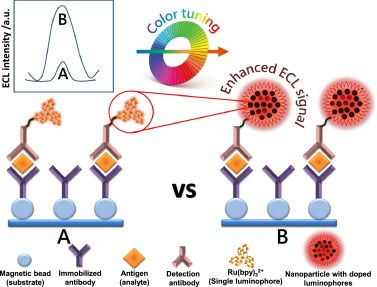What is ECL - in one sentence
- Zeki Kurtulus Bardakci
- Oct 16
- 1 min read

Electrochemiluminescence (ECL) is a lab method where a small voltage makes special labels on antibodies emit light, and the instrument measures that light to quantify the target in the sample.
Why labs like it
Very sensitive and precise for low concentrations
Wide measuring range, fewer dilutions
Fast & stable reagents, reliable calibration on Elecsys/ECLIA platforms
How a Roche ECL immunoassay works
Sample mixes with antibodies (one carries a light-emitting ruthenium label; another is biotinylated).
The complex binds to magnetic particles (streptavidin).
A magnet holds the particles on the electrode.
Applying a small voltage triggers light emission from the label.
The detector reads the light—more light = more analyte.
The signal is compared to a calibration curve and reported.
Typical uses
Cardiac markers (troponin), thyroid/fertility hormones, tumor markers, infectious disease tests, vitamins, and many more Elecsys ECLIA assays.

Roche immunoassay analyzers that use ECL
Elecsys 1010 / 2010 (benchtop) (That is very old models)
MODULAR ANALYTICS E170 (legacy module)
cobas® e 411 (standalone)
cobas® e 601 / e 602 (cobas 6000/8000 families)
cobas® e 402 / e 801 (compact & high-throughput on pro/8000)
Care tips (for best performance)
Keep reagents within expiry and at recommended temperatures.
Follow probe/reaction area cleaning cycles (IFU).
Log error codes and QC trends; include photos when requesting help.

Need help?

If your cobas e / Elecsys analyzer throws errors, fails QC, or shows intermittent issues, we can help with board-level repair and guided troubleshooting.Ship-in service available across Florida. Include the model, error code, and photos when you contact us.


Comments